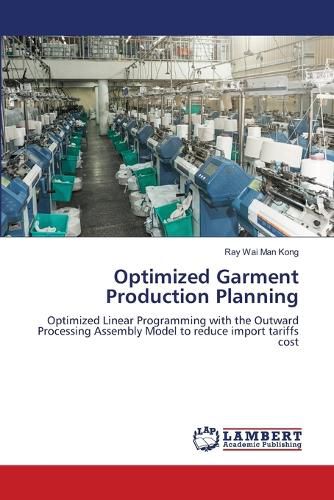Readings Newsletter
Become a Readings Member to make your shopping experience even easier.
Sign in or sign up for free!
You’re not far away from qualifying for FREE standard shipping within Australia
You’ve qualified for FREE standard shipping within Australia
The cart is loading…






In the context of global garment manufacturing, companies face significant challenges due to high import tariffs, particularly those imposed on goods produced in China. This has prompted manufacturers to explore innovative strategies, such as separating the Outward Processing Assembly (OPA) of garment sewing parts, which involves producing components in China and completing final assembly in other Asian countries. This study investigates the complexities of production planning within this framework, focusing on optimizing assembly costs while addressing constraints related to labor, machine capacity, and regulatory policy.Current production planning practices often lead to inefficiencies, including surplus and shortage capacities across factories, resulting in increased costs and late deliveries. To tackle these issues, this research employs stochastic linear programming algorithms to formulate a multistage production planning model aimed at minimizing total assembly costs while ensuring timely delivery of garments.
$9.00 standard shipping within Australia
FREE standard shipping within Australia for orders over $100.00
Express & International shipping calculated at checkout
In the context of global garment manufacturing, companies face significant challenges due to high import tariffs, particularly those imposed on goods produced in China. This has prompted manufacturers to explore innovative strategies, such as separating the Outward Processing Assembly (OPA) of garment sewing parts, which involves producing components in China and completing final assembly in other Asian countries. This study investigates the complexities of production planning within this framework, focusing on optimizing assembly costs while addressing constraints related to labor, machine capacity, and regulatory policy.Current production planning practices often lead to inefficiencies, including surplus and shortage capacities across factories, resulting in increased costs and late deliveries. To tackle these issues, this research employs stochastic linear programming algorithms to formulate a multistage production planning model aimed at minimizing total assembly costs while ensuring timely delivery of garments.